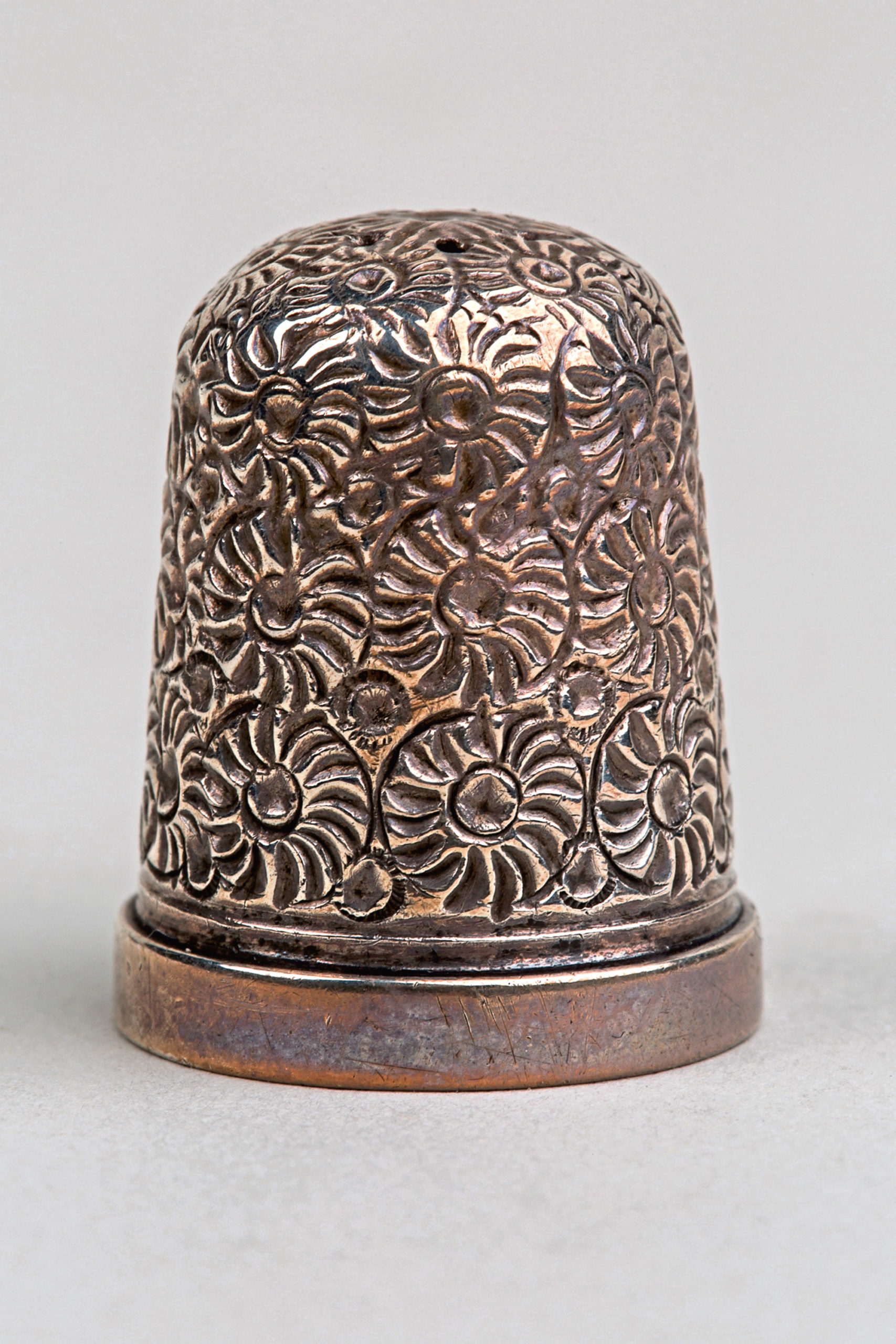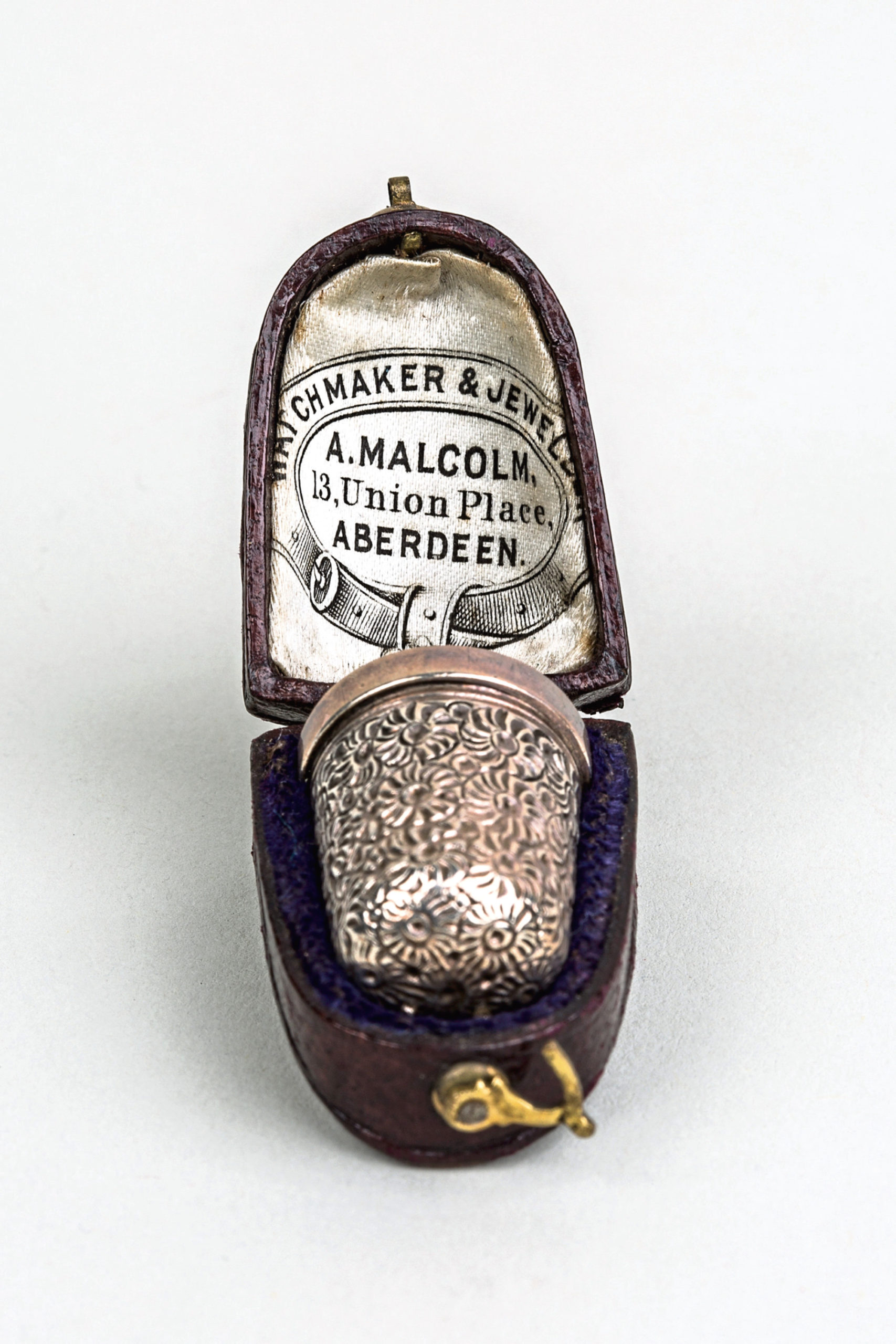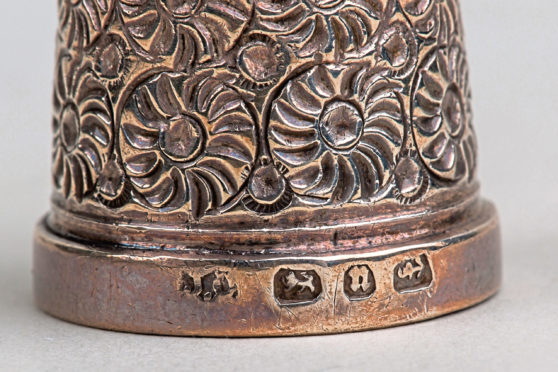Thimbles protect the finger while pushing a needle through cloth. They can be made of a wide range of materials, in different sizes and shapes, and with a diverse array of decoration.
Whether utilitarian thimbles or those of a more luxurious kind, old thimbles make us wonder about their original users, the societies in which they existed and the needlework and crafts with which they assisted.
Artistic needlework has long been a popular pastime in fashionable circles, and it continued to be so throughout the 19th Century.

For middle and upper-class women this silver thimble would most likely have been a welcome gift for carrying out sewing pursuits in style. It was bought locally from Andrew Malcolm, who sold luxury watches and jewellery from his shop at 13 Union Place, Aberdeen, between 1886 and 1890.
The punched hallmarks struck on the rim show clues of the thimble’s origin. The anchor town mark shows registration at the Birmingham Assay Office. This symbol was presented sideways between 1860 to 1899. The lion passant standard mark was used in English assay offices after 1820 to show the metalware’s purity. 1887 is revealed by the date letter, ‘n’. The maker’s mark ‘J.C’ most likely represent Joseph Cook, who was a known maker of thimbles based in Birmingham.

The high-value thimble is small and so a special container was needed to keep it safe to hand. It is in its original hook-fastening case with a hinged lid that lifts. The thimble is supported by the velvet rest. The specially shaped box has the name of the retailer printed on the white silk lining inside the lid.
The thimble was made from a sheet of silver curled up into a cylinder. It has a band rolled at the base, to prevent the needle slipping. This flat turnover rim is the simplest form to create.
The dimples and grooves on the thimble catch the needle eye and keep it from slipping. The handmade indentations on this floral-patterned thimble have been ‘chased’, where the metal is pushed aside with a tool rather than cut out and metal removed.
Thimbles made of silver are relatively soft and constant needle pressure caused damage. This thimble has several scratches and signs of use, and no doubt saw many fascinating needlework projects over the years.
